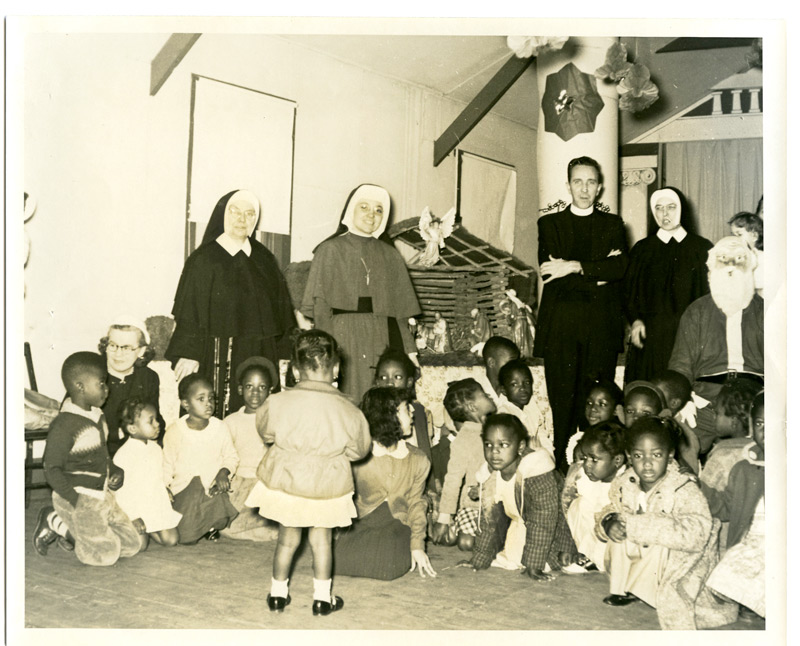
 Cynthia Hill, 52, is a vocal champion of Neighborhood House.
Cynthia Hill, 52, is a vocal champion of Neighborhood House.
The mother of four and grandmother of 12 is one of the most recent success stories of the community outreach, and gives them praise for her transformation.
Struggling in school when she was young, she dropped out and spent years battling poverty and addiction, until one day she decided to give the outreach’s GED program a try.
Along the way, staff and volunteers helped her overcome major hurdles, including abscessed teeth, a need for glasses and a drug addiction. She said Franciscan Sister Noreen Buttimer and Nikki Grimball, director, were with her every step of the way, never letting her quit.
“Sister Noreen is a pusher,” Hill said with a laugh. “She pushed me hard, but she loves all of her students.”
Today, Hill is attending Trident Technical College for a degree in culinary arts and was on the dean’s list.
 She is just one of a multitude that the outreach center has helped in its 100-year history, which will be celebrated in April.
She is just one of a multitude that the outreach center has helped in its 100-year history, which will be celebrated in April.
Neighborhood House started through St. Francis Infirmary as a way to help immigrants arriving in the port city in 1915. The idea was conceived by Mary McKenna, superintendent of the infirmary, and approved by Bishop Henry P. Northrop, who asked the Sisters of Charity of Our Lady of Mercy to serve there. They accepted, and McKenna and Sister Michael Leary led the way, offering health-related programs, Bible school, and classes for women.
The first building was at 90½ Columbus St., now a residential area of old Charleston homes. In 1918, the sisters bought a house at 88 America St., in the block where Trident Tech sits now. The outreach operated there until 1953 when, unable to maintain the old building, it was sold and the sisters moved down the street into space at Our Lady of Mercy Church at the invitation of Bishop John J. Russell.

As the years passed, the center continually evolved to meet the needs of the community. In its century of work, the social service has seen many changes, but one thing that has never changed is the outpouring of community support. In the late ’20s and ’30s, local farmers helped feed the hungry during the Great Depression.
 After World War II, the face of the surrounding community changed to predominantly African American. Healthcare and community classes continued to be part of the outreach, along with helping the unemployed find jobs.
After World War II, the face of the surrounding community changed to predominantly African American. Healthcare and community classes continued to be part of the outreach, along with helping the unemployed find jobs.
In 1968, the diocesan office of Catholic Charities took over the outreach and established a soup kitchen, which remains the largest program to date. In 2013, they served over 47,000 meals and provided almost 4,000 people with groceries from the food pantry.
Grimball, current director of Neighborhood House, recalls the day he realized how important the service was to the wellbeing of the community. He was talking to people as they left the soup kitchen, telling them to have a good weekend and enjoy the four-day holiday. After everyone left, a man came up and said, “Ya know, for a lot of people, it’s not going to be a good weekend.” He pointed out that without the soup kitchen, many wouldn’t have a meal for four days. That marked the start of the weekend food program.
 Today, the outreach offers four different food services, a clothing center, and about 14 education and assistance programs, including parenting and budgeting classes.
Today, the outreach offers four different food services, a clothing center, and about 14 education and assistance programs, including parenting and budgeting classes.
Grimball said the goal is not to provide handouts, but to teach people to help themselves.
And of course, new programs and services are always being added. For example, the outreach is in the final stages of obtaining a water fountain for the community, said Sister Bridget Sullivan, OLM.
Such a simple human need, but so hard to find when you’re poor or homeless on hot summer days, Sister Bridget said, noting that she doesn’t know of a single water fountain in the city.
 Neighborhood House is also hoping to provide laundromat vouchers to those in need.
Neighborhood House is also hoping to provide laundromat vouchers to those in need.
As for Hill, she encourages everyone she meets to go to the outreach for help in turning their lives around, saying that if she can do it, they can too.
“I got so much more than my GED from the Neighborhood House — nothing but good things have happened since then,” she said. “The Lord has really blessed me.”

